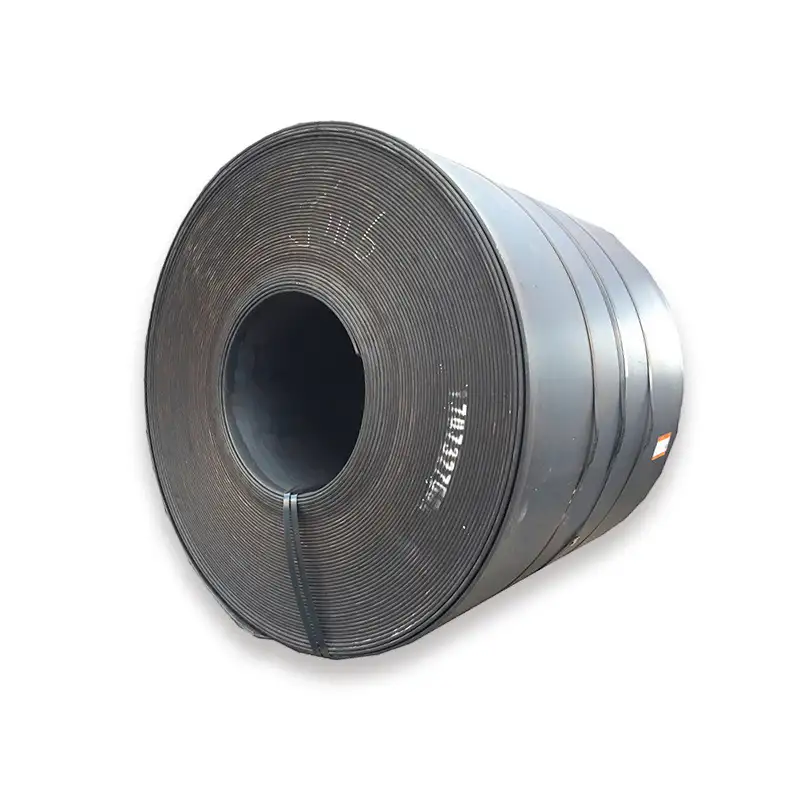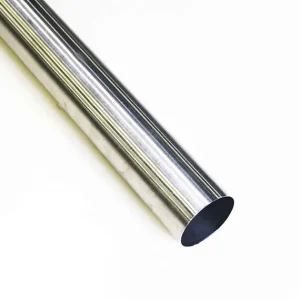AISI/SAE 1023 cold rolled steel coil is a low-carbon, cold-finished steel grade prized for outstanding formability, reliable weldability, and good machining behaviour; it is commonly used for shafts, stampings, automotive components and general engineering parts where ductility and surface finish matter. For buyers needing volume, MWAlloys supplies 1023 CRC at competitive factory prices with fast dispatch from China and guaranteed mill test documentation.
What is 1023 cold rolled steel coil?
SAE/AISI 1023 (UNS G10230) is a plain carbon steel with nominal carbon ~0.20–0.25% designed for wrought products. When supplied as a cold-rolled coil (CRC) it has been pickled/annealed and cold-rolled to final thickness, delivering a smoother surface, tighter thickness tolerances and higher dimensional precision than hot-rolled equivalents — making it suitable for visible or formed parts where surface quality matters.
Chemical composition
Below is the standard composition band commonly used by mills and referenced in SAE J403 and common material datasheets.
| Element | Typical range (weight %) |
|---|---|
| Carbon (C) | 0.19 – 0.25 |
| Manganese (Mn) | 0.30 – 0.60 |
| Silicon (Si) | ≤ 0.35 (varies by mill) |
| Phosphorus (P) | ≤ 0.040 |
| Sulfur (S) | ≤ 0.050 |
| Iron (Fe) | Balance |
Notes: Exact limits can vary slightly by specification (SAE J403 tables, mill specs). For engineering calls use the SAE/AISI table and confirm with mill test certificate (MTC).
Physical & mechanical properties
The following are representative values used in design and procurement (verify with supplier MTC for each batch):
| Property | Typical value (metric) | Notes |
|---|---|---|
| Density | 7.85 g/cm³ | standard for low-carbon steels. |
| Elastic modulus (E) | 190–210 GPa | depends slightly on temp/processing. |
| Tensile strength (UTS) | ~425 MPa (range 370–480 MPa) | depends on cold work/anneal. |
| Yield strength (Rp0.2) | ~240–360 MPa (typical 210–360 MPa) | cold rolling increases yield vs hot-rolled. |
| Elongation (A) | ≥15% | good ductility for forming. |
| Brinell hardness (HB) | ~110–130 HB | anneal/finish dependent. |
| Machinability | ~65% of Bessemer reference | generally good for turning and milling. |
Design note: CRC suppliers often quote mechanicals for the as-supplied (cold-rolled + annealed) condition and for any further temper/cold-work states. Always request the MTC and, for critical parts, a certificate showing tensile, yield, elongation and hardness for the delivered coil.
Specification table & common coil sizes
Common specifications and purchase formats for 1023 CRC:
| Item | Typical values |
|---|---|
| Standard grade names | SAE/AISI 1023, UNS G10230 |
| Common specs | SAE J403 chemical reference; ASTM equivalents commonly used for cold-finished strip/coil (confirm with mill) |
| Thickness (finished) | 0.3 mm – 3.0 mm (typical CRC band; thicker strip possible) |
| Width | 600 – 1,520 mm (cut-to-width options available) |
| Coil ID | 508 mm, 610 mm typical (other IDs on request) |
| Coil mass | ≤25 tonnes (mill limits) |
| Surface finish | Bright/skin-passed, Oiled (standard), Re-rolled/temper rolled on request |
| Packing | Interleaved paper/oil + wooden crate or export seaworthy packing |
Tolerance: thickness and width tolerances depend on mill standard for CRC; request supplier tolerance tables (gauge tolerance, flatness, camber).
Manufacturing & finishing (how 1023 CRC is produced)
-
Casting/Primary rolling — steel melted and cast into slabs.
-
Hot rolling — rough reduction to coil (HRC).
-
Pickling and annealing — removes scale and sets microstructure; for CRC an anneal is performed to deliver desired ductility.
-
Cold rolling — coil is reduced to final thickness at room temperature; work hardening tightens thickness distribution and surface quality.
-
Skin-pass/temper — light final pass to control yield point elongation and surface finish.
-
Oiling/interleaving and slitting — protects the surface and prepares coils for shipment or slitting to strips.
Cold rolling improves surface, dimensional accuracy and can raise yield/tensile slightly depending on reduction and temper cycle.
Heat treatment, coatings and surface options
-
Annealed (full anneal): yields maximum ductility and better formability; common for deep-drawn parts.
-
Intermediate anneal + temper rolling: controls yield point elongation to avoid stretcher strains during forming.
-
Galvanizing / pre-treatment: CRC 1023 is usually pretreated (pickled) before galvanizing; for galvanized products choose appropriate steel grade and coating spec.
-
Surface: Oiled for export, bright/clean finish for visible parts. For painting, degrease and phosphate as per paint system.
Typical applications (why engineers choose 1023)
Common applications where 1023 CRC is chosen for its balance of formability, strength and surface finish:
-
Automotive inner panels, brackets and secondary structural parts
-
Shafts, small machined components, splines (forged/turned)
-
Stamped parts and deep-draw components for appliances and enclosures
-
Cold-formed tubes and furniture components
-
General engineering uses where a combination of ductility and good surface is required.
Fabrication notes (forming, machining and welding)
-
Forming: 1023 CRC is forgiving in bending and drawing; ensure correct bend radii (depending on thickness) and use annealed coils for deep drawing.
-
Machining: good machinability rating (~65%); recommended tooling coatings and moderate feeds for best finish.
-
Welding: standard fusion welding methods (MIG/TIG) work well; preheat generally not required for thin CRC parts; watch for distortion due to high thermal input.
-
Galvanising & painting: normal pre-treatments apply (degrease, pickle and flux for hot-dip galvanizing or proper pretreatment for electro-galvanizing).
Practical tip: when stamping automotive interior components, control yield point elongation with light skin-pass to avoid stretcher strains.
Quality control & testing recommendations
When procuring CRC 1023, request the following:
-
Mill Test Certificate (MTC) showing chemical analysis (C, Mn, P, S, Si), mechanicals (UTS, yield, elongation) and heat number.
-
Surface inspection report (scratch, laminations, coating weight if galvanized).
-
Dimensional tolerance table for thickness, edge camber and width.
-
Non-destructive testing (UT/eddy) for critical applications.
-
Material traceability and export/import documentation (COC, origin).
Ask the supplier for sample certificates and, for critical parts, request a sample coupon for validation.
2025 Price comparison (USA / Europe / China)
Steel prices fluctuate with feedstock, regional demand, tariffs and mill schedules. The figures below are market-index approximations for mid-2025 (use them as procurement benchmarks; always request current firm quotes).
| Region | Representative CRC price (USD / metric tonne) | Notes / source |
|---|---|---|
| United States (mid-2025) | ~1,050 – 1,300 USD/MT | US CRC traded broadly in this band in Q2–Q3 2025; domestic prices were under pressure at times. |
| Europe (mid-2025) | ~660 – 840 EUR/MT (~720 – 910 USD/MT) | Northern Europe ex-works ranges circa €660–685 in parts of mid-2025; import offers and local premiums vary. |
| China (mid-2025) | ~500 – 570 USD/MT (approx. CNY 3,900–4,100/t) | China domestic CRC was substantially lower than western markets in mid-2025 — strong export competitiveness. |
Interpretation & procurement tips
-
China prices are often lower on FOB or ex-works but factor in freight, duties and quality control.
-
Europe carries a premium for local supply and shorter lead times; offers often quoted ex-works.
-
US prices showed volatility in 2025; tariffs and mill scheduling influenced landed costs.
-
For end users buying CRC 1023 coils, request itemised quotes (mill price, slitting, packaging, freight) and specify required MTC and surface finish.
Procurement checklist & logistics
-
Confirm exact chemistry and acceptable tolerances (C/Mn/Si/P/S).
-
Demand MTC (EN 10204 3.1/3.2) where required by project specifications.
-
Specify thickness & width tolerances, coil ID, and weight per coil.
-
Confirm packaging for overseas shipment: oiled, interleaved, strapped, wooden crate.
-
Negotiate lead time and partial shipments (if you need slitted coils).
-
Ask about stock availability and whether the mill has ready coils or needs production slots.
-
Include agreed inspection and acceptance terms (pre-shipment inspection, third-party inspection if required).
Environmental & recycling notes
1023 is ferrous and highly recyclable. For projects targeting circularity, ask suppliers for documented scrap content and recyclability statements. Cold-rolled coil production energy intensity and emissions vary by mill — for green procurement, request mill environmental disclosures or certifications.
FAQs
-
What makes 1023 different from 1020 or 1025?
1023 has slightly higher carbon than 1020 (~0.20–0.25% vs ~0.18–0.23%) giving modestly higher strength while retaining good ductility. -
Can 1023 be heat-treated to high hardness?
No, being low-carbon it has limited hardenability. Case hardening/carburising is used when a harder surface is required. -
Is 1023 suitable for deep drawing?
Yes, when supplied annealed with a suitable surface finish, it performs well for stamping and deep drawing. -
What certificates should I request?
MTC (EN 10204 3.1/3.2 if required), chemical & mechanical test results, and surface inspection reports. -
Does cold rolling increase strength?
Yes, cold work raises yield and tensile; final properties depend on reduction and any anneal/temper. -
How is corrosion resistance?
Same as any unalloyed carbon steel — protect with painting, plating or galvanizing for outdoor/use in corrosive environments. -
What tolerances are typical for CRC?
Thickness tolerances are tight compared with HRC; exact values vary by mill and gauge — request mill tolerance tables. -
Can I galvanize 1023 CRC?
Yes. pre-treatment required; consider suitability for intended coating method. -
Delivery lead time from China (MWAlloys)?
Lead times depend on stock; MWAlloys keeps a rotating inventory and offers expedited shipping for stocked gauges — confirm coil availability when ordering. -
How to avoid stretcher strains in stamping?
Use light skin-pass/temper rolling and control blank holder force; specify yield point control on the order.





